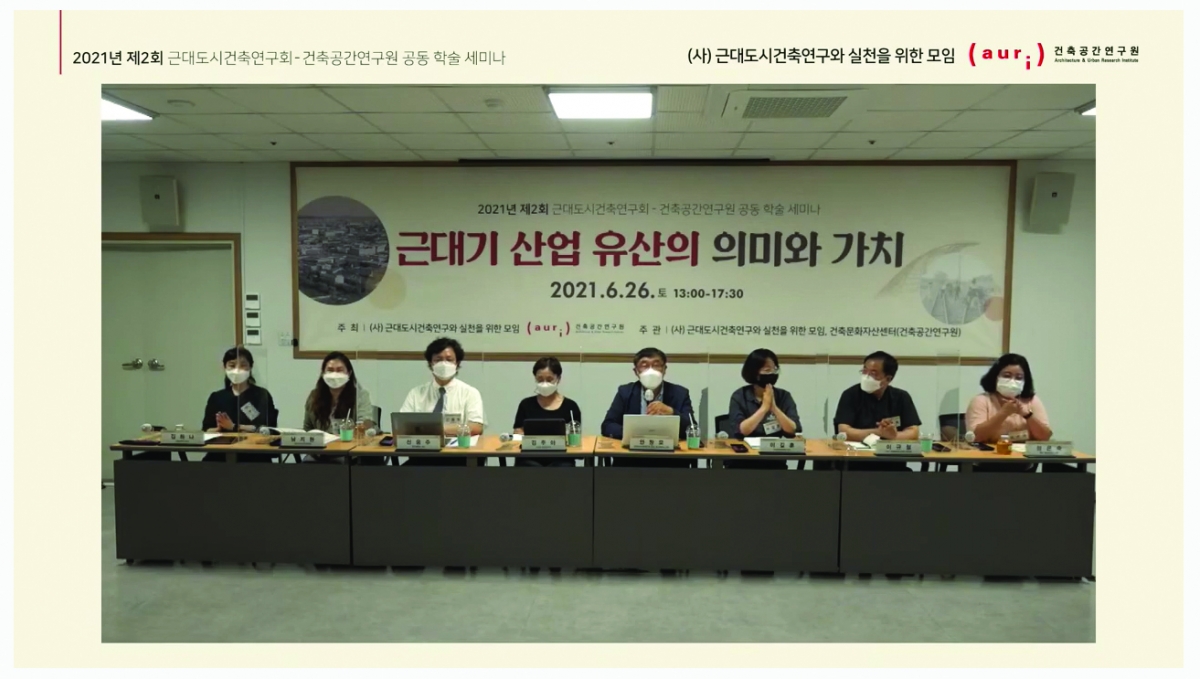
Seminar ‘The Meaning and Value of Modern Industrial Heritage' / Screenshot from YouTube
On June 26, the second joint academic seminar organised by the Society of Korean Modern Architecture & Urbanism and Architecture & Urban Research Institute (AURI) on ‘The Meaning and Value of Modern Industrial Heritage’ was held at the Gwangju City Hall. This event was convened in order to review the present situation of modern industrial heritage in the country and to propose means of enhancing its significance and value as architectural and cultural assets.
The seminar was moderated by Lee Kyungah (professor, Korea National University of Cultural Heritage). Kim Hana (lecturer, Seoul National University) who led the first presentation, observing the architectural features revealed in G-valley (Guro Gongdan) ‒ which accelerated economic development in Korea ‒ and classified and analysed them according to structure and scale, changes in density from extension, and the façade. Also, as a Korean factory architectural model designed for the Korea Trade Fair (1968), Kim highlighted its historical value. Under the title ‘Railside Industrial Heritage of Gyeonggi-do and Incheon’, Nam Jeehyun (researcher, Gyeonggi Research Institute) then followed with her presentation, in which she outlined the definition and scope of industrial heritage while exploring how various railside facilities were brought about by unique railroad characteristics that differed according to the supplies in transport. After this presentation, Shin Woongju (professor, Chosun University) gave an overview of the history, design and development of rice granaries (agricultural warehouse) built all over the country to stabilise rice prices and placed particular focus on the architectural features of warehouses located in the Jeolla-do province. Citing the key example of Daegu SAMSUNG Creative Campus, Kim Jooya (principal, Time and Space Research Institute) gave a historical survey of the facilities that have survived throughout the evolution of and changes in trends of urban design and emphasised their contemporary and ontological values.
The panel discussion that followed featured Lee Kilhun (professor, Duksung Women‘s University), Lee Kyuchul (researcher, AURI), and Jeong Eunsook (chief, metaa). After agreeing with Lee Kyuchul’s explanation that value judgments and further investigation towards industrial heritage will eventually lead to a methodology regarding preservation and use, the participants debated the specific methodology and how any one particular approach can draw out and preserve core values. Ahn Changmo (professor, Kyonggi University), who presided over the panel discussion, closed the event with his final comment to supplement the day’s findings by considering a revival of interest in agricultural heritage ‒ which is a kind of a life heritage ‒ as it was largely excluded from the field of industrial heritage and proposed a follow-up project into the regional expansion of the model factory.




